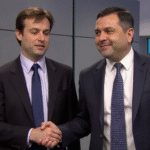Overview of the Situation
The total capital expenditure experienced a 4.9% interannual decline in Q1 2025, primarily due to a significant 22.4% drop in public sector spending. Excluding the pandemic-affected year of 2020, this represents the weakest performance since 2009.
Key Factors Contributing to the Decline
- Public Spending Cutbacks: The most substantial factor contributing to the decline in fixed investment is the reduction in public spending. This decrease has had a ripple effect on various sectors, including infrastructure and public services.
- Private Sector Hesitation: Private investors have shown reluctance to increase their capital expenditure due to economic uncertainties, further exacerbating the overall decline in fixed investment.
- Global Economic Slowdown: The global economy is experiencing a slowdown, which has negatively impacted investment activities across various countries.
Who is Affected?
The decline in fixed investment affects multiple sectors, including:
- Infrastructure Development: Reduced public spending on infrastructure projects, such as roads, bridges, and public transportation, may lead to delays or cancellations of planned projects.
- Public Services: Decreased investment in public services, like education and healthcare facilities, could result in suboptimal conditions for students and patients.
- Business Environment: A less favorable business environment due to underinvestment in critical infrastructure and public services may discourage both domestic and foreign investors.
Relevance of the Situation
Understanding this situation is crucial for several reasons:
- Economic Growth Impact: Fixed investment is a significant driver of economic growth. A decline in this area can negatively impact overall GDP and hinder long-term economic development.
- Policy Implications: Policymakers need to address the underlying causes of this decline, such as public spending cutbacks and private sector hesitance, to stimulate investment and support economic recovery.
- Global Economic Trends: Monitoring fixed investment trends can provide insights into global economic health and help anticipate potential challenges or opportunities.
Key Questions and Answers
- What is fixed investment?
- Why is the decline in fixed investment concerning?
- What can be done to address this issue?
Fixed investment refers to the purchase of long-term assets, such as buildings, machinery, and intellectual property. It is a crucial component of capital expenditure and plays a significant role in driving economic growth.
A decline in fixed investment can negatively impact economic growth, hinder infrastructure development, and create an unfavorable business environment. It may also exacerbate existing economic challenges, such as those caused by global slowdowns.
Policymakers should focus on increasing public spending, encouraging private investment through favorable policies, and addressing global economic uncertainties to stimulate fixed investment.






